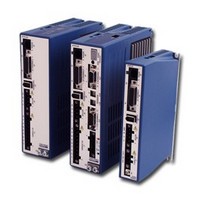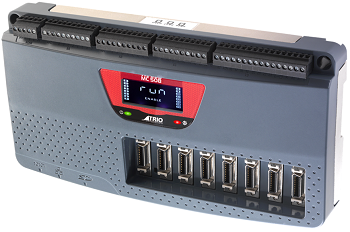The Black Ink Team's Guide To Motion Control Systems (Open Vs. Closed Loop)
by Black Ink Team
People make mistakes. People can only work so many hours in the day. And, people can only work so fast. As a manufacturer, you want to produce as many products as possible, but you can only hire so many people while staying profitable. What can help you manufacture products quickly and precisely, that bypasses the need to add on extra hands?

Kollmorgen's S200 Servo Drive
The answer: motion control systems. Motion control refers to the arrangement of actuators, motors, robotic arms and other components to facilitate the creation, inspection, and packaging of goods. When people talk about factory automation, they are really talking about motion control.
There are two types of motion control systems, ‘open loop’ and ‘closed loop.’ Open loop control systems consist of two elements: something that is moving something else and something that is controlling the thing that is moving something else. Closed loop control systems have one more element than that: a sensor that tells the control element where the moving element has moved something to.
Open loop systems are used for processes where accuracy isn’t a major concern. Also, they are used when the actuator/motor/etc. they consist of is itself very precise, without the need for any external measuring system. Stepper motors are an example of a motion control system component that can be relied upon in a open loop system.

Trio Motion's MC508 Motion Coordinator
Closed loop systems are used when accuracy is a chief concern. For an automated drilling station, a closed loop system would work as such: the driver (control element) would tell the actuator (moving element) to push the drill it is holding into the piece being worked on, until a distance sensor told the driver that enough has been drilled - at which point the actuator would reverse.
